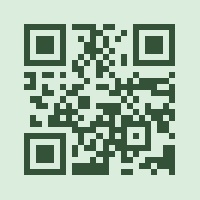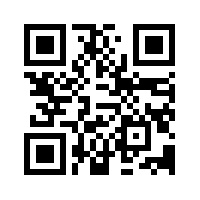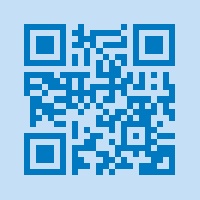Virtual Field Trip to Machu Picchu, Peru
I went on a virtual field trip to Machu Picchu, Peru (All Media, n.d.). It was almost like being there, since I was able to change my view on each page. I was able to move my view left, right, up, or down to explore more of the area than a regular photo would allow. Each page also gave factual information about the Incans, which helped focus the ‘traveler’ on a specific portion of the scene. This virtual field trip made me feel as though I was on a guided tour of Machu Picchu and it was nice to be able to take in the breathtaking scenery without the views getting lost among the crowds of people. Virtual field trips allow students to explore far off lands that they learn about without spending a fortune to travel there. Or visit places that are difficult to explore, like the depths of the oceans or Mt. Everest. Or places located in dangerous parts of the world, like the Kremlin in Russia. Virtual field trips are also great for viewing art, museums, festivals, science related topics, or even exploring performing arts around the world. Use the QR Code I created below to experience the Machu Picchu virtual field trip.

QR Code Uses
QR Codes have helped libraries better engage patrons, as well as making services more user friendly. Some of my favorite ideas on how libraries could use QR Codes come from 10 Ways to Use QR Codes in School Libraries, an article by QR Tigers. If your school library is big, then an interactive library experience where the patron can tour the library virtually would be beneficial (QR Tigers, 2023, section 2). It would allow patrons to get an understanding of the layout before visiting the library in person. I also like the idea of using a QR Code for a scavenger hunt (QR Tigers, 2023, section 8). A school librarian could create a scavenger hunt to help students learn the layout of the library, where a QR Code would lead them to the next part of the library. Making services more easily available to patrons is another great idea (QR Tigers, 2023, section 3). Students could use QR Codes to sign up for specific services, like a Makespace or using a 3-D printer.
I created two more QR Codes that could be placed within classrooms for students to use. One would direct students to the school library webpage and the other would direct students to the school’s webpage. Both websites have many student resources.


StarLab
My school district has access to a planetarium because one of the high schools within the county has a planetarium built within its walls. However, other schools within the county need to schedule a field trip to that high school in order to take part in the planetarium experience. StarLab allows the services to be right there at your own school. It’s especially good for school districts that do not have any sort of access to a planetarium. I wonder if any planetarium can access the videos shown within the StarLab or if they are specific to StarLab. The video, Losing the Dark, mentioned by Jasmine Hager (2019) in her article, StarLab makes its way to Richmond County schools, sounds very informative when it comes to light pollution. If those resources are only available to StarLab, then it may be beneficial to have it come to your school. It’s impressive that a planetarium can travel; it is not something you would think could be possible. A school library could be in charge of bringing this technology to the school. It would help students with science topics by giving them a type of hands-on experience.
Double-Robot
The Double-Robot is another wonder in the world of layered reality. Chelsea Donovan (2021) opened people’s eyes to the uses of a Double-Robot. In her article, New robot roving around art gallery at ODU, letting viewers explore exhibits, she wrote about how the ODU art gallery uses a Double-Robot to allow viewers to virtually explore the gallery. A viewer can reserve time to use Gordon, the Double-Robot, and they can control it simply by using their phone, tablet, or computer (Donovan, 2021, para. 7). Users can move the robot around the gallery and zoom in on exhibits or labels (Donovan, 2021, para. 8). Users can also use Gordon to interact with people who are physically at the ODU art gallery through a speaker and built in microphone (Donovan, 2021, para. 9). Libraries could use the Double-Robot in a similar way. Patrons can use it to explore the library, find books, and even use the screen to access a QR Code to help with check-out.
Layered reality offers so many possibilities for school libraries. It increases patron usage and engagement. It also helps any library that is short staffed by meeting the changing needs of patrons through the various layered reality options.
References
All Media. (n.d.). Machu Picchu, Peru [Virtual Field Trip]. Google Arts & Culture. https://artsandculture.google.com/story/vAURmhrr6y8TIg
Donovan, C. (2021, March 17). New robot roving around art gallery at ODU, letting viewers explore exhibits. 3WTKR. https://www.wtkr.com/news/coronavirus/new-robot-roving-around-art-gallery-at-odu-letting-viewers-explore-exhibits
Hager, J. (2019, February 14). StarLab makes its way to Richmond County schools. Richmond County Daily Journal. https://www.yourdailyjournal.com/news/85221/starlab-makes-its-way-to-richmond-county-schools
QR Tiger. (2023, August 15). 10 Ways to Use QR Codes in School Libraries. QR Tiger. https://www.qrcode-tiger.com/qr-codes-in-school-libraries
Hi Constance,
Great post! I appreciate you using several different QR codes to demonstrate the different possible applications. Did you use different websites to make each code? The different colors on them gives the impression of it, and if so that’s also a very clever way to show that each of the websites are easy to use. I also appreciate your real-world application suggestion for short staffed libraries. As someone who has worked at short staffed locations in different industries, the idea of any way to responsibly lower the workload is good to me!
Great post! The Double-Robot section was particularly interesting. There was an episode of “Bob’s Burgers” that had one of these robots, and I didn’t even know that was a real thing! I wonder how people feel being approached by and spoken to by Gordon. Very cool!